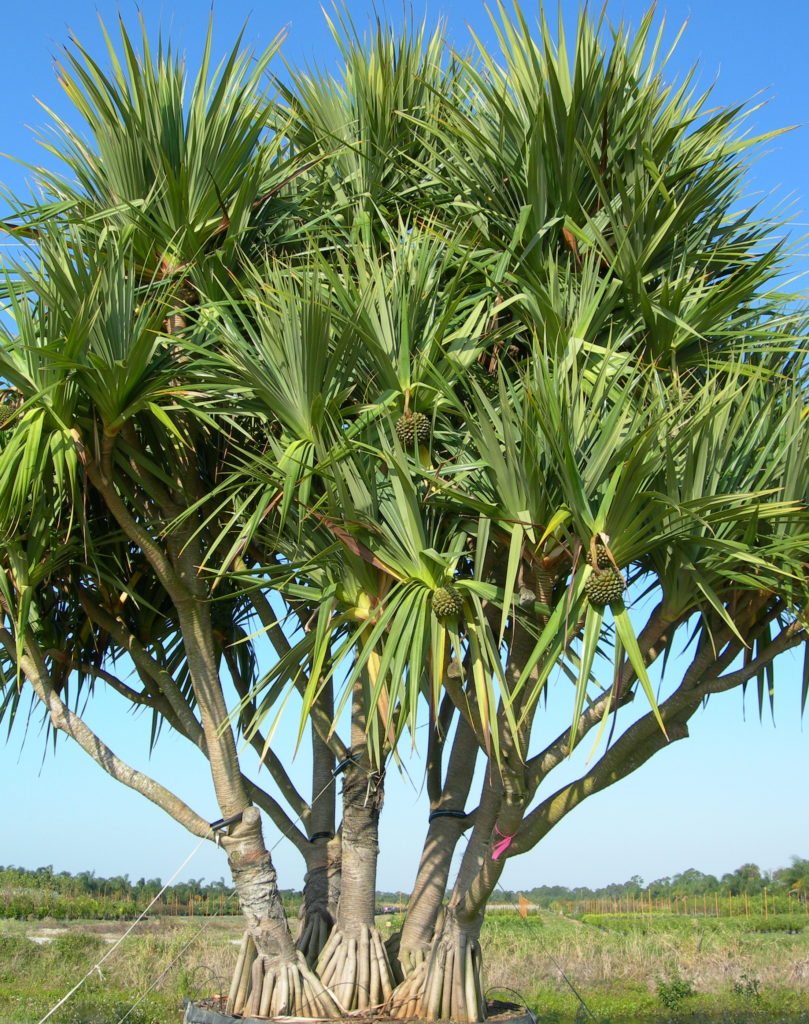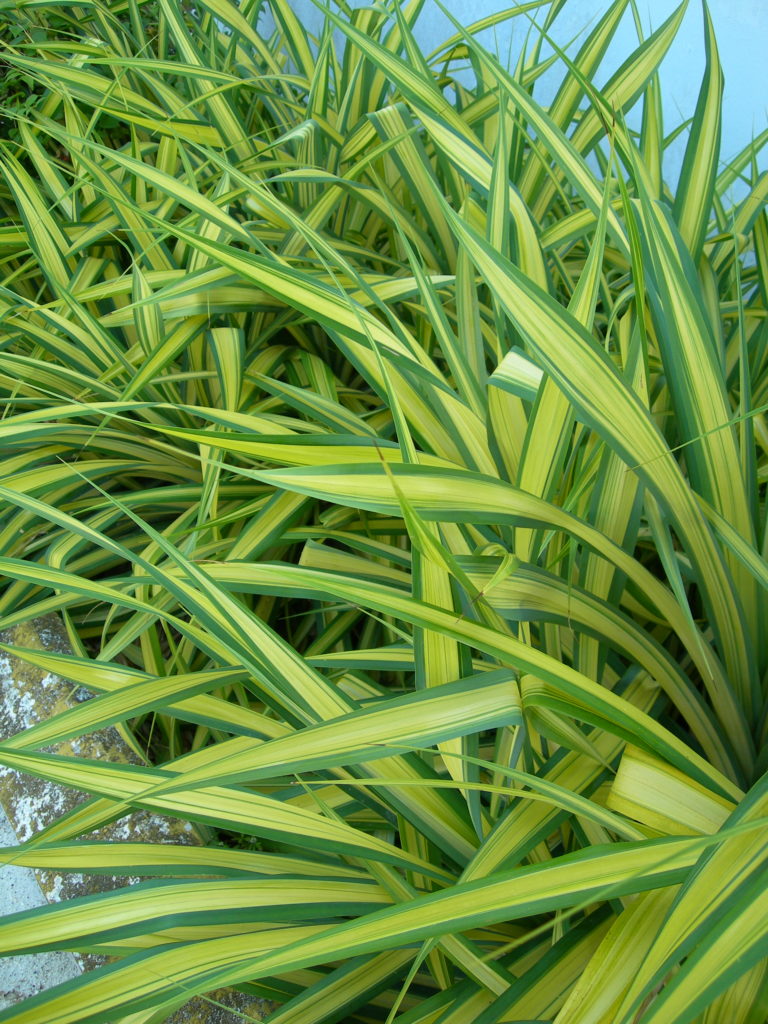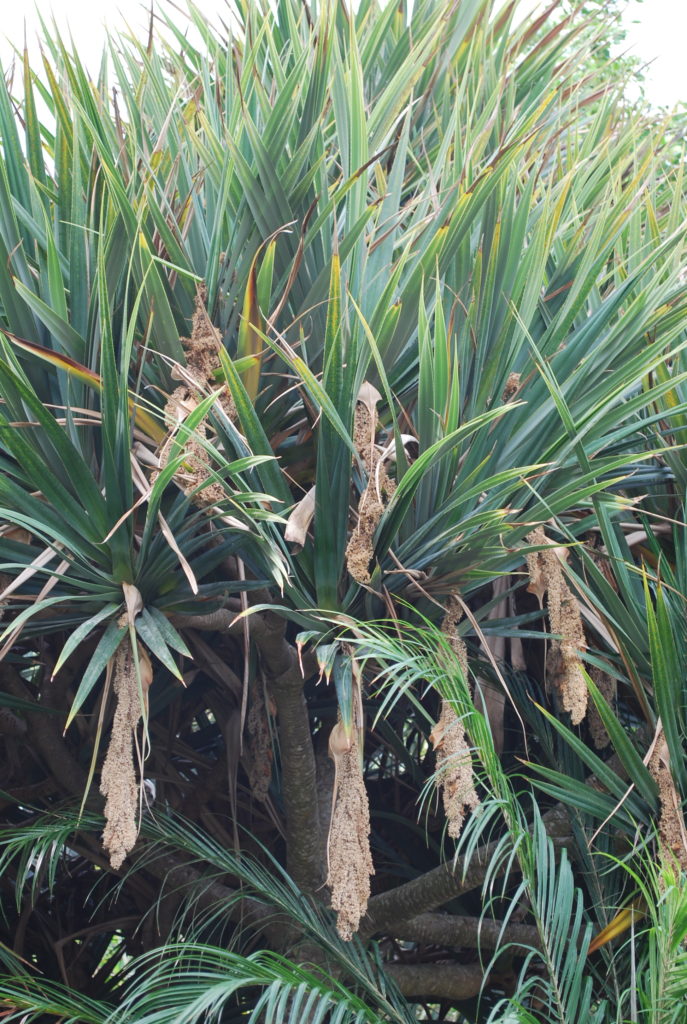
Q: My favorite screw palm sheds leaves all the time. My SO dislikes the mess and wants me to get rid of it. Help me convince her we should keep this beautiful tree, please.
A: There are two Pandanus species, the scientific name for screw pines or palms, found in warm landscapes. Both species are known for shedding leaves throughout the year. They are neither related to pine trees nor palms, as the names imply. They are large plants, evergreen, perennial, and are monocots like grasses, corn, and orchids.
Pandanus utilis, the most commonly grown screw pine, is native to Madagascar. It sports sizeable branching, multiple stems/trunks with many prop roots topped with crowns of spirally arranged leaves. The leaves are linear and stiff with a fine coating of wax on the undersides and wickedly sharp red-orange spines on the margins and occasionally the midrib. The leaves grow to 6 feet long and 4 inches wide and have keeled midribs.
This screw pine is a lovely tree, growing up to 60 feet tall and 25 feet wide. However, in the landscape, they typically grow 25 to 30 feet tall and 15 feet wide. This tree, which creates a tropical look, must have plenty of space to grow. The sturdy prop roots make screw pine a wind-resistant plant, and pruning is not usually necessary.

Pandanus baptistii cv. ‘Aureus’ is known as Variegated Dwarf Screw Pine or New Britain Island Screw Pine and hails from New Britain Island and the other islands of the Bismarck Archipelago Papua New Guinea. It is also evergreen and perennial and usually grows in large, shrub-like clumps, eventually becoming trees. The most popular selections have leathery leaves with white or yellow stripes. The leaf edge spines are much reduced or absent from this species.

Pandanus is dioecious, which means it produces male and female flowers on separate plants. The flowers grow at the ends of the branches; the fragrant male flowers in bract sheaths, and the female flowers on corded, pendent spikes, crowed in dense heads. The fruit is a syncarp, which is a multiple fruit like a pineapple with many drupes embedded in the flesh. Some cultures eat it.
To my eye, the Pandanus are beautiful if planted where there is enough space to grow to maturity. However, many folks think they are messy and consider them a problem because screw pines perpetually shed leaves and the female plants heavy, massive fruit. It is not unusual for mature screw pines to shed more than thirty or more 6 feet long, sharp-edged leaves daily. However, these beautiful, hurricane-resistant trees are a spectacular sight. The best way to deal with the abundance of shedding leaves is to pay the landscape maintenance crews a bit more to deal with the shed leaves during their regular visit. Also, have someone climb the tree or use a bucket truck four times a year to remove the dead leaves before they fall.
This column first appeared in the Treasure Coast Newspapers.
Can you top a screw pine to prohibit growing taller? If topped, will it send out new top shoots?
Pandanus branches can be pruned. The cut branches sometimes respout and somtimes they don’t. Topping will not stop it from growing taller. Once topped, many plants require regular maintenance to maintain that size. Such pruning will eventually reduce the health of the tree and it will decline. Topping is never a recommended practice, see Plant and prune trees right for best results during hurricane season . My recommmendation if the tree is too big for the current location is to transplant it to a larger area and plant something else in its place.